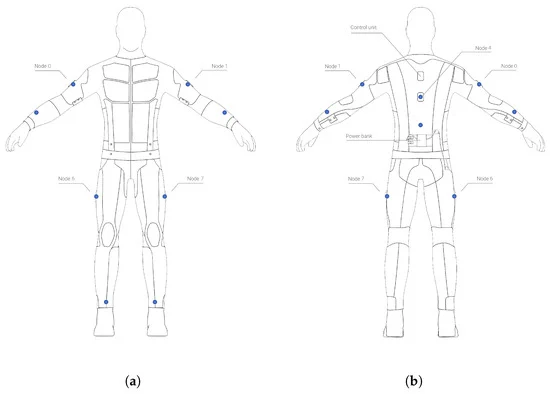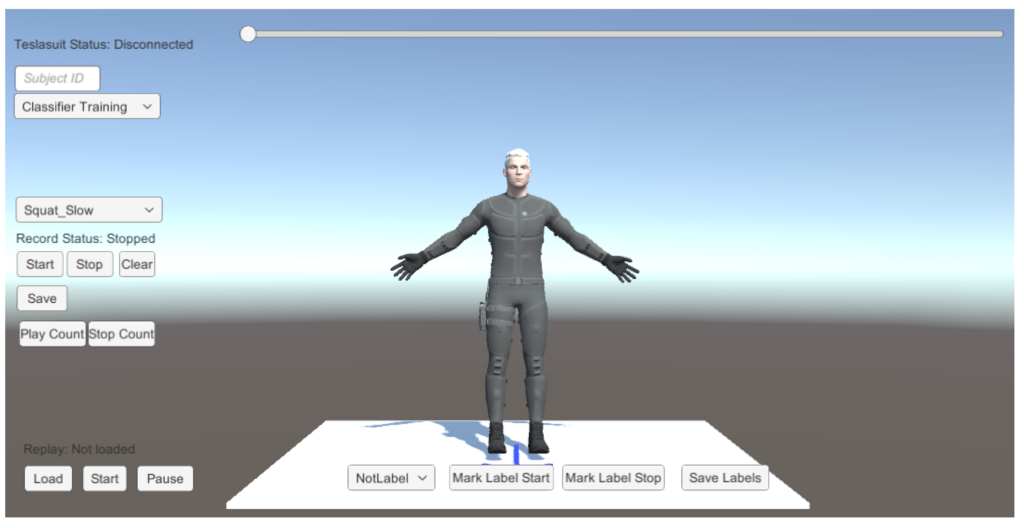Are you tired of feeling like you’re going through the motions during your workout routine? The TESLASUIT may be just what you need to take your training to the next level.
The science bit. The field of bio-mechanics is a rapidly growing area of research that is helping to revolutionize the way we understand and treat the human body. At the heart of bio-mechanics is the study of how the body’s mechanical systems, such as bones, muscles, tendons, and ligaments, work together to support movement and function.
Through detailed analysis and experimentation, bio-mechanical researchers are uncovering new insights into the mechanics of the human body and developing innovative treatments for a wide range of conditions.
Essence and methodology
The study “Recognizing Full-Body Exercise Execution Errors Using the Teslasuit” was conducted at the University of Darmstadt, one of the leading research institutions in Germany, by a team of researchers from the Department of Computer Science and the Department of Sport Science.
The purpose of the study was to evaluate the effectiveness of the TESLASUIT technology in providing real-time haptic feedback to users and improving their training. The TESLASUIT is a full-body haptic suit capable of recognizing, tracking, and analyzing the user’s whole body’s movements (Fig.1), while delivering real-time haptic feedback via transcutaneous electrical nerve stimulation. Besides, by manipulating pulse width, amplitude, and frequency, the suit can reproduce a wide range of sensations.

To explore how effective haptic technologies can be in improving fitness and rehabilitation, the researchers developed their own Unity application (Fig. 2) to build a database to train and support the vector machines and probabilistic movement models to detect exercise execution errors and movement assessment (Fig.3).

The study involved 15 volunteers (12 males and 3 females, aged 22-38, 176-194 cm tall, medium body-sized, and physically active for approximately 4.7 hours per week). During the experiment, the subjects were asked to perform a number of exercises including deep squats, line lunges, and push-ups with no pause and having breaks of 1 or 2 seconds between executions.
The specialist overseeing the research selected a number of perfect executions to help create probabilistic models for each IMU or joint. In turn, “wrong” samples (some of which were performed intentionally) were used for additional training of the machine learning models and to evaluate how effectively execution errors were detected.

After the movement error for a specific joint and axis was determined, researchers calculated the location and intensity for the haptic feedback to be applied to correct movements.
Results
The researchers could predict exercises with an average accuracy of 86.38% and segment 96.98% or 99.39% of repetitions precisely when the subjects had breaks of 1 or 2 seconds, respectively. On top of that, evaluation of the movement assessment showed that the team, with their probabilistic models and the TESLASUIT, succeeded in revealing significant errors across multiple joints and delivering the user proper feedback with the help of the TENS technology.
The researchers admit that there’s much space for improvements, say, engaging more subjects and experts for building even more effective and precise models for recognizing even minor errors, but the already discovered potential seems dramatic.
The study also highlighted the potential for the TESLASUIT to make fitness and rehabilitation more accessible to people, especially those who do not have access to personal trainers or rehabilitation specialists.
Academic Program
As we continue to develop and improve the TESLASUIT technology, we encourage those interested to join our Academic Program and be a part of shaping the future of physical training and rehabilitation.
By collaborating with researchers and users, we believe that we can fully unlock the potential of the TESLASUIT and make a positive impact on the way people exercise and improve their physical health.
To learn more about the TESLASUIT technology and how it can benefit your training, please feel free to contact us and one of our team members will be happy to assist you.
